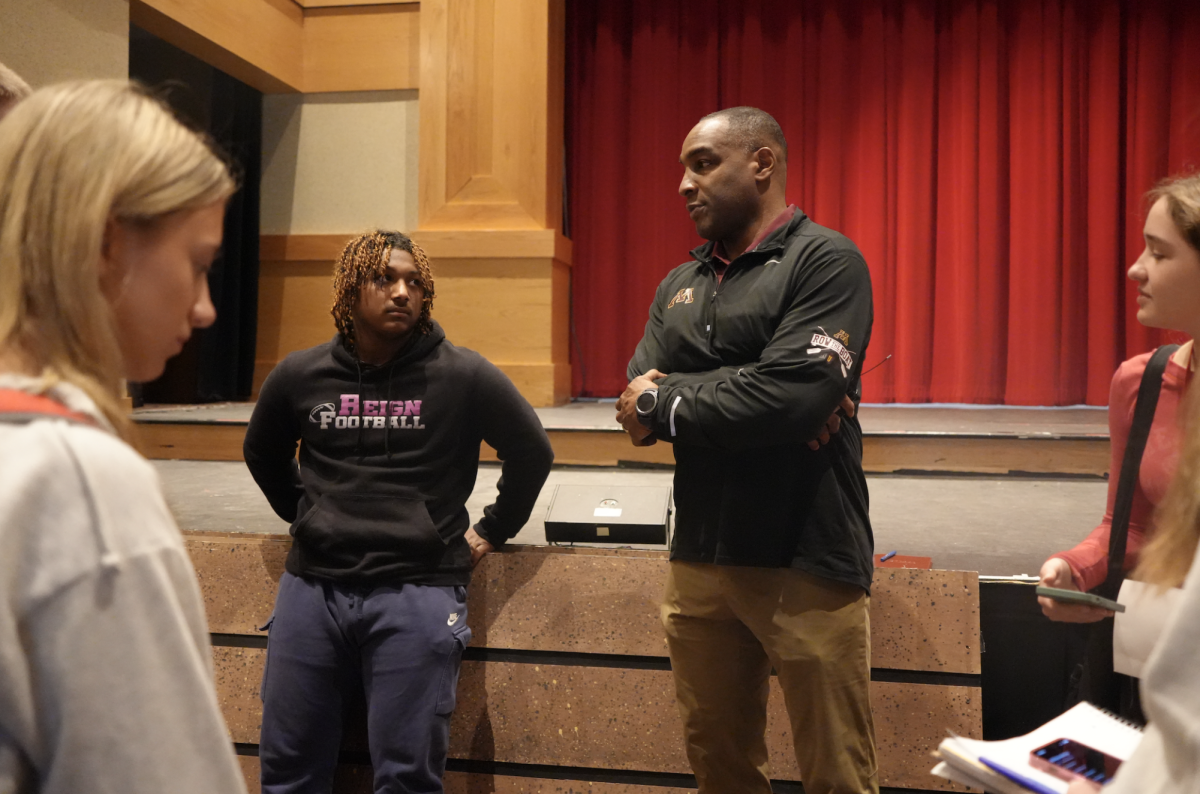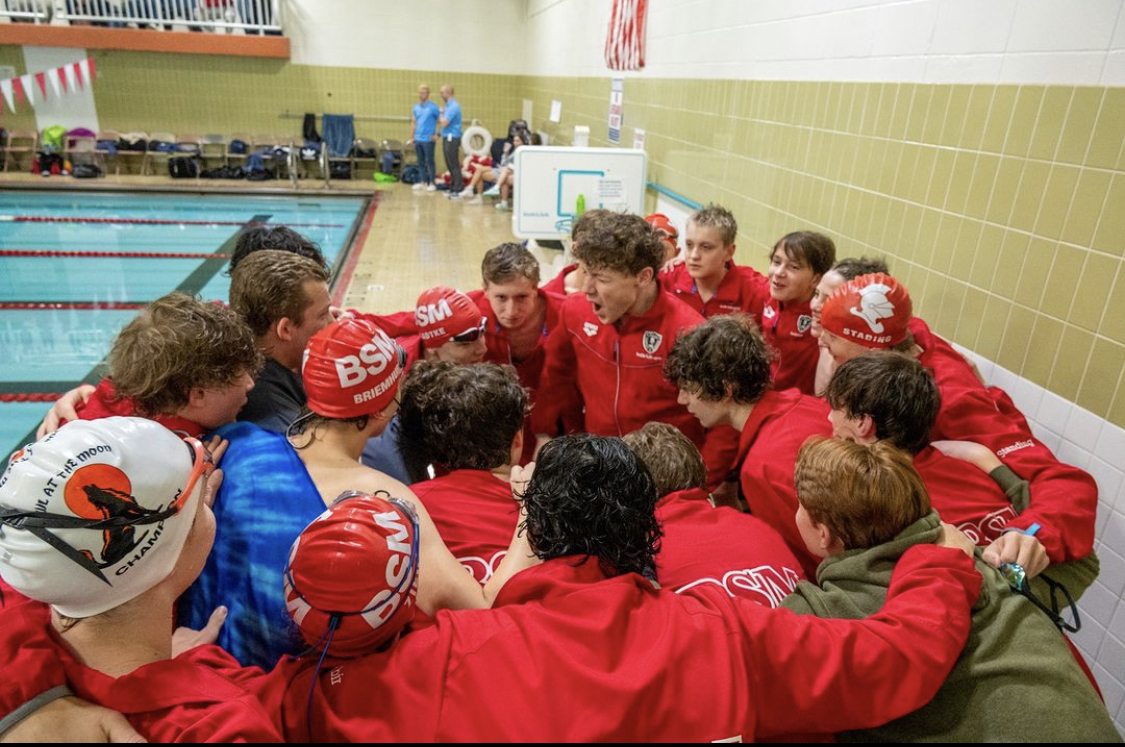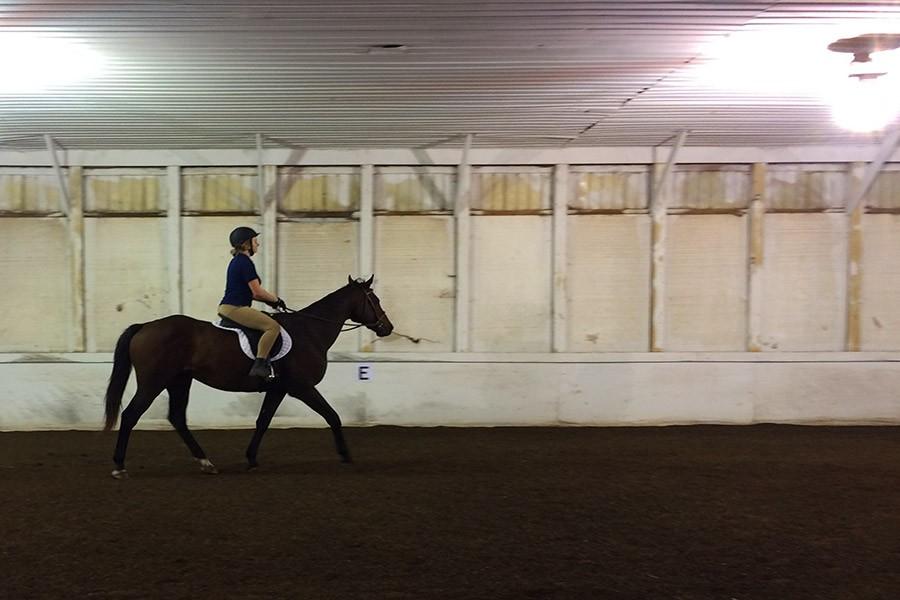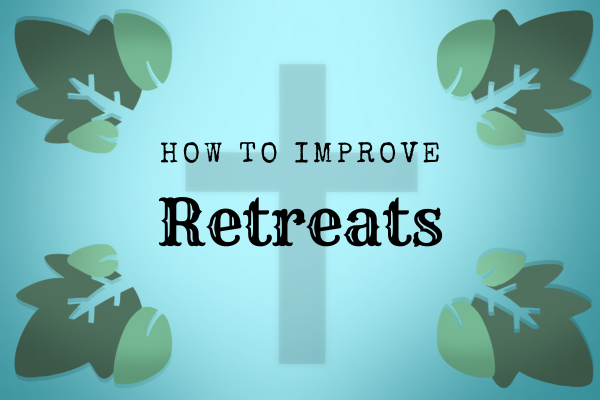Students and faculty show passion for horse riding
It’s not hard to find a student at BSM who participates in soccer, RKVC, speech, or even all three extracurriculars. But one activity that requires just as much hard work, commitment, and expense is horseback riding.
Falk and her new horse Mystery hope to compete in dressage and hunter jumper riding in the future.
Erin Falk, Megan Rydell, Paige Junker, Claire Holden, and senior high math teacher Mr. Sam Fulco all have unique experience with training, competing, or caring for horses.
Equitation
There are many styles of riding and competitions, but one of the most well-known is Equitation. This type of horseback riding is when a rider and his or her horse jump over fences of various heights. In addition, a rider is judged on how he or she controls the horse on the course and during different series of gaits, which are styles of riding such as cantering and trotting.
Junior Paige Junker participates in Equitation, and she is the number one junior rider in Minnesota and the Midwest. Junker spends many hours each week devoted to practice, travel, and competition so she can keep up her winning title. “I do Junior Hunters, which is a series of courses. I train seven days a week. I travel every other weekend all over the country for horse shows to qualify for [competitions] like finals and so forth,” Junker said.
Dressage
Horses can have both good and bad days, so you always need to stay calm.
— Senior Megan Rydell
Senior Megan Rydell describes dressage, another style of competition, as “ballet for horses.” The rider trains his or her horse to perform a routine that consists of various styles of strides, such as a two-beat trot or three-beat canter, while staying in rhythm with music. Rydell believes that one of the most valuable things she has learned from riding is patience. “Horses can have both good and bad days, so you always need to stay calm,” Rydell said.
Junior Claire Holden competes in Eventing, which is a competition that combines dressage, cross-country jumping––a style of competition where the rider controls the horse to jump over logs and other obstacles in a field––and show jumping, which is similar to Equitation. Holden and Rydell both compete in dressage, which requires hours of training with their horses and memorizing the routines. “Most of the summer, I spend most of every day just at the barn with them,” Holden said.
Rydell recommends any beginning rider to stay patient, especially during training because a trainer can ask you to do something that you might be unsure of; one practice exercise challenged Rydell’s strength and patience. “My trainer had me hold a dollar bill between my leg and the saddle on a two-hour trail ride,” Rydell said.
Time Commitment
Training a horse for competition can often be very demanding because of the time commitment and how unpredictable horses can be. This is why many riders, like Rydell, keep their horses at a stable where they are fed and exercised throughout the day before training sessions.
Mr. Fulco has spent the last five years raising young horses in hopes of owning horses of his own one day. While at the stable, Mr. Fulco has watched the birth of many horses and gets to know them well from spending time with them. “These horses are going to be around [for] a long time, and they all know me, so I am going to stay as close to them as I can for as long as I can,” Mr. Fulco said.
Cost
Purchasing, taking care of, and training a horse can be a costly activity; Erin Falk, senior, recently purchased her own horse with money from her first job.“I always wanted a horse and I had a job last year so I saved up. I payed for it with my own money,” Falk said.
Falk and her horse Mystery are still learning to work together after a month, but she hopes to transition to more serious riding in the future. “I just got my horse and I plan on doing dressage and hunter jumper,” Falk said.

















































